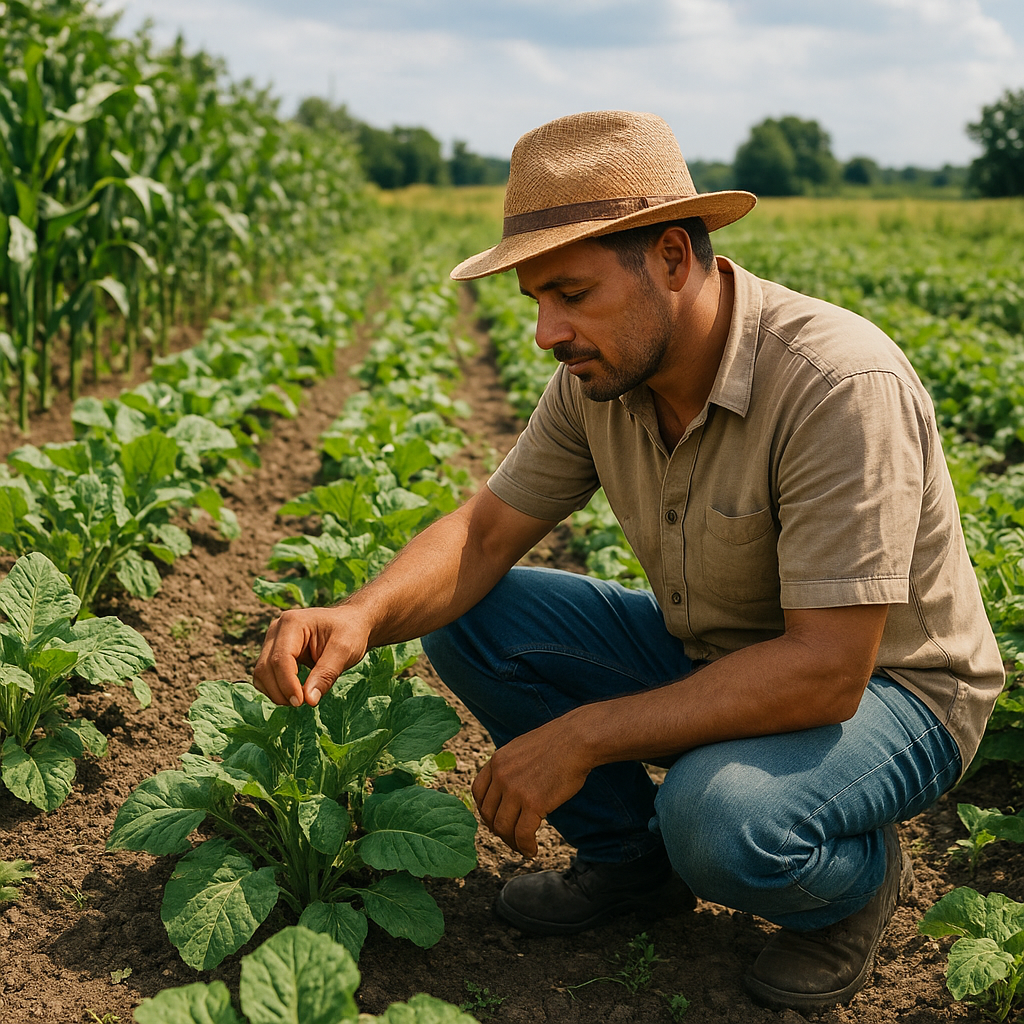
Controlling pests naturally without chemicals is an increasingly popular approach in sustainable agriculture. As concerns about the environmental and health impacts of chemical pesticides grow, farmers and gardeners are turning to natural methods to manage pest populations. This article explores various strategies and techniques for natural pest control, emphasizing the importance of maintaining ecological balance and promoting biodiversity.
Understanding the Importance of Natural Pest Control
Natural pest control is not just about avoiding chemicals; it is about creating a balanced ecosystem where pests are kept in check by natural predators and environmental factors. This approach is rooted in the principles of integrated pest management (IPM), which combines different management strategies and practices to grow healthy crops and minimize the use of pesticides.
One of the key benefits of natural pest control is its sustainability. By reducing reliance on chemical pesticides, farmers can decrease the risk of pests developing resistance, which is a common problem with conventional methods. Additionally, natural pest control methods are often more cost-effective in the long run, as they rely on renewable resources and processes.
Moreover, natural pest control contributes to the health of the soil and surrounding environment. Chemical pesticides can harm beneficial insects, soil microorganisms, and even the plants themselves. By using natural methods, farmers can preserve the biodiversity of their farms, which is crucial for maintaining a resilient agricultural system.
Techniques for Natural Pest Control
Biological Control
Biological control involves using living organisms to control pest populations. This can include introducing natural predators, such as ladybugs or predatory mites, to target specific pests. For example, ladybugs are effective at controlling aphid populations, while predatory mites can help manage spider mites.
Another form of biological control is the use of parasitic wasps, which lay their eggs inside or on the bodies of pest insects. As the wasp larvae develop, they consume the host insect, effectively reducing the pest population. This method is particularly useful for controlling caterpillars and other soft-bodied insects.
Cultural Control
Cultural control involves modifying farming practices to make the environment less conducive to pest infestations. This can include crop rotation, intercropping, and adjusting planting times to avoid peak pest activity. By rotating crops, farmers can disrupt the life cycles of pests that are specific to certain plants, reducing their numbers over time.
Intercropping, or planting different crops in proximity, can also help deter pests. Some plants naturally repel certain insects, so strategically placing these plants can protect more vulnerable crops. For example, planting marigolds alongside tomatoes can help repel nematodes and other soil-borne pests.
Mechanical and Physical Control
Mechanical and physical control methods involve using barriers, traps, and manual removal to manage pest populations. Physical barriers, such as row covers or insect nets, can prevent pests from reaching crops. These barriers are particularly effective against flying insects and can be used to protect young plants during critical growth stages.
Traps can also be an effective way to monitor and reduce pest populations. Sticky traps, pheromone traps, and light traps can attract and capture pests, providing farmers with valuable information about pest activity and helping to reduce their numbers.
Manual removal, although labor-intensive, can be an effective way to control pests in small-scale operations. Handpicking insects or removing infested plant parts can prevent pests from spreading and causing further damage.
Botanical and Organic Sprays
Botanical and organic sprays are derived from natural sources and can be used to control pests without the harmful effects of synthetic chemicals. Neem oil, for example, is a popular organic pesticide that disrupts the life cycle of insects and acts as a repellent. It is effective against a wide range of pests, including aphids, whiteflies, and caterpillars.
Other botanical sprays, such as those made from garlic, chili peppers, or essential oils, can also deter pests. These sprays can be made at home and applied directly to plants, providing a natural barrier against insect infestations.
Promoting Biodiversity for Pest Control
One of the most effective ways to control pests naturally is by promoting biodiversity on the farm. A diverse ecosystem is more resilient to pest outbreaks, as it supports a wide range of natural predators and beneficial organisms. By encouraging biodiversity, farmers can create a self-regulating system where pests are kept in check by their natural enemies.
Planting a variety of crops and maintaining natural habitats, such as hedgerows or wildflower strips, can attract beneficial insects and birds that prey on pests. These habitats provide food and shelter for predators, helping to maintain their populations and enhance their effectiveness as natural pest control agents.
Additionally, maintaining healthy soil is crucial for promoting biodiversity. Healthy soil supports a diverse community of microorganisms that can suppress soil-borne pests and diseases. Practices such as composting, cover cropping, and reduced tillage can improve soil health and contribute to a balanced ecosystem.
Challenges and Considerations
While natural pest control offers many benefits, it is not without its challenges. Implementing these methods requires a deep understanding of the local ecosystem and the specific pests and crops involved. Farmers must be willing to invest time and effort into monitoring pest populations and adjusting their strategies as needed.
Natural pest control methods may also require a longer time to see results compared to chemical pesticides. Farmers need to be patient and persistent, as building a balanced ecosystem takes time. However, the long-term benefits of reduced chemical use and improved environmental health make it a worthwhile investment.
Another consideration is the potential for unintended consequences. Introducing new species for biological control, for example, can sometimes lead to unforeseen ecological impacts. It is important to thoroughly research and plan any interventions to minimize risks and ensure that they are appropriate for the specific context.
Conclusion
Controlling pests naturally without chemicals is a viable and sustainable approach to agriculture. By understanding the principles of natural pest control and implementing a combination of biological, cultural, mechanical, and organic methods, farmers can effectively manage pest populations while preserving the health of their ecosystems. Promoting biodiversity and maintaining healthy soil are key components of this approach, contributing to a resilient and productive agricultural system. While challenges exist, the benefits of natural pest control make it an essential strategy for the future of sustainable farming.

